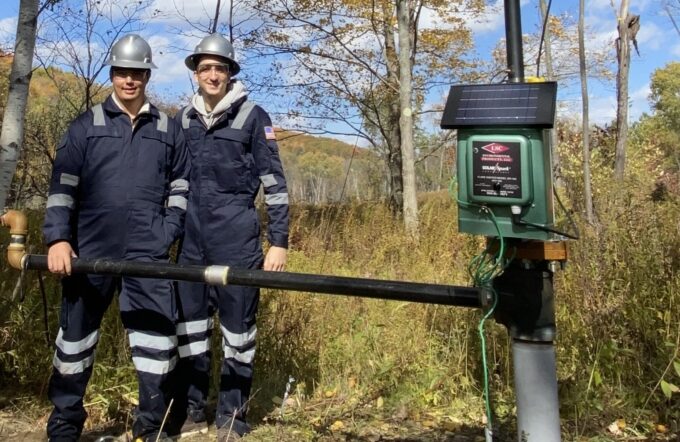End-of-life oil and gas wells are scattered throughout the United States. Leaking methane and releasing toxic chemicals, these estimated 3.7 million wells are emitting 290 kilotons of methane per year, according to the U.S. Department of the Interior—an amount the U.S. Environmental Protection Agency says is equivalent to the output of 1.6 million cars.
Some of these wells are “orphaned,” becoming a liability of states. Some are “abandoned,” meaning they’re owned by an oil & gas producer but have dried up. And some are considered “marginal” wells, which still produce small amounts of oil and gas per day.
It’s expensive and complicated to fix methane leaks in these end-of-life wells: plugging can cost an average of $100,000, there are long wait times for equipment and teams, and wells are often located in spots that are difficult for the necessary large vehicles to access. As a result, many of these wells have been left to emit methane for decades.
Andrew Lane was headed for a full-time job in the oil and gas industry when he began working on his senior design project at the University of Pennsylvania in 2021. A teammate raised the large number of abandoned and orphaned oil and gas (AOOG) wells around his hometown of Pittsburgh, PA, and so the group set out to develop a solution.
They quickly gained “too much traction to ignore,” Lane says, and their solution became Capwell—a startup pioneering a modular, transportable, and affordable technology that fits onto these end-of-life wells to capture and destroy leaking methane.
“Because it’s so affordable, we can apply our tech across an entire leaking-well portfolio, immediately eliminating methane emissions,” Lane says.
Lane became the company’s president and CEO, living in his parents’ basement with $100 to his name and building the initial prototype in the garage. The co-founders developed a complex design that can destroy methane and toxic chemicals, put them back into the flow line, or use them to generate on-site power. Their product is also equipped with solar panels and batteries, so it doesn’t need a grid hookup—another feature that makes it versatile and easy to install.
The Capwell team then conducted proof-of-concept projects in three states and raised initial funding for the venture.
Lane considers Capwell’s technology to be an interim solution to quickly curb methane emissions until a well can be permanently plugged (in a process called plugging and abandonment, or P&A). However, given the slow pace of action for AOOG wells, this “interim” solution can last 15 to 20 years, with servicing needed just once annually.
The deep need for Capwell’s solution is reflected in the Bipartisan Infrastructure Law and Inflation Reduction Act. The Bipartisan Infrastructure Law dedicates $4.7B to “orphaned well site plugging, remediation, and restoration activities” on both public and private land, provides states incentives to quickly cut methane emissions, and directs funding to identifying and cataloging undiscovered AOOG wells. Meanwhile, the Inflation Reduction Act includes both methane-emission fines and grant funding to lower those emissions. These laws bolster the market for Capwell’s solution, incentivizing oil and gas companies, states, the federal government, and Tribal governments to act swiftly on tackling methane from AOOG wells.
The Capwell team will conduct pilots in the coming months and begin raising its seed funding, while also streamlining manufacturing of its solution. The startup aims to reach its first commercial-level sales by the end of the year, according to Lane.
Capwell joined Greentown in August 2023, and the team has had opportunities to engage both with fellow startup members and with the broader climatetech ecosystem.
“I’ve really enjoyed my time as a Greentown member,” Lane says. “It’s been, first of all, a lot of fun—I really enjoy the people who are around us and the Greentown team. The lab is great for the stage we are now, which is single-product development. What I’ve found most useful is the amount of events; I always pop out and I see a bunch of people who I know, from the investor side of things or the customer side of things. I meet new people all the time here. It’s been a great experience.”

